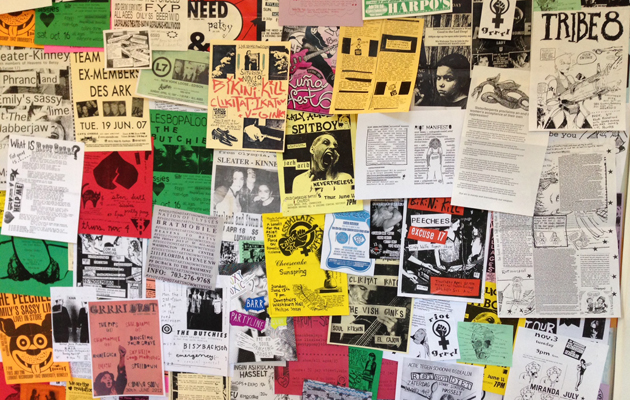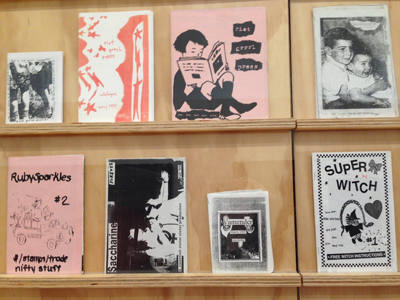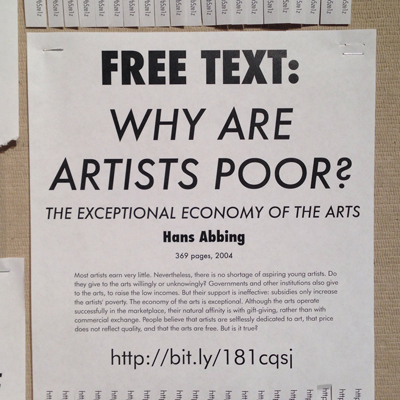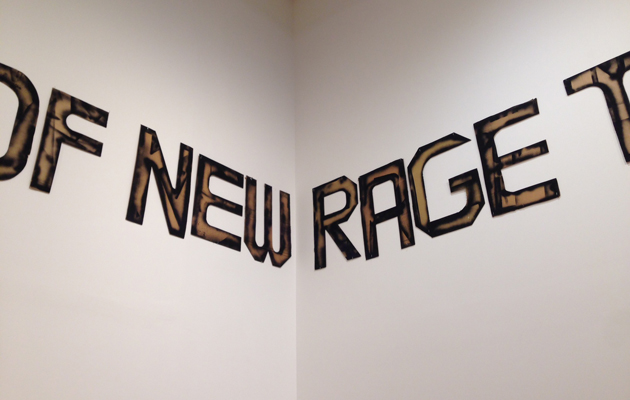|
|
||
|
Through art, craft and graphic design, an exhibition in Portland shows the lasting influence of the early 90s punk movement on the larger feminist story, says Gail O’Hara Riot Grrrl was an early-1990s punk feminist network that used music, zines, meetings and other forms of communication in an attempt challenge sexism, racism and homophobia. The titans of the scene were bands such as Bikini Kill, Bratmobile and Huggy Bear, and the zines and workshops were often devoted to reclaiming power, collaborative organisation, creative resistance and DIY ethics, as well as sharing experiences (on topics such as body image, sexual double standards, self-defense and so on) and skills with each other. Curated by Astria Suparak and Ceci Moss and organised by the Miller Gallery at Carnegie Mellon University, Alien She is currently on view in two galleries in Portland, Oregon. The Museum of Contemporary Craft is showing works by feminist studies professor Allyson Mitchell, Brooklyn artist LJ Roberts, creative superstar Miranda July, handmade-nation documenter Faythe Levine and San Francisco artist Stephanie Syjuco, while PNCA’s 511 Gallery is presenting an archival collection of zines and fliers that represent Riot Grrrl’s aesthetic and politics: artwork by Pittsburgh artist Ginger Brooks Takahashi, Oakland art professor Tammy Rae Carland and other specially curated collections and films.
The curators are quick to point out that this show isn’t meant to be the definitive Riot Grrrl show, but rather a taste of what it was and what these seven artists – all of whom were influenced by Riot Grrrl in some way – have been doing. The statement pieces on the main floor of MOCC include We Couldn’t Get In, We Couldn’t Get Out, a looming barbed-wire fence cloaked in hot pink yarn by Roberts and Mitchell’s Ladies Sasquatch a trio of comical and terrifying giant stuffed animals meant to suggest that realistic female bodies should be big, feral, hairy and cuddly. Mitchell’s Recommended Reading is a photocopied wallpaper that covers an entire wall in important feminist and LBGT book spines. Upstairs, Syjuco’s Free Text is a series of open-source URLs printed on pieces of paper that visitors can rip off and take home. Levine’s slides and photos demonstrate her interest in “intentional communities”, life off the grid and creating utopian worlds. July’s contributions include films, her Somebody app, examples from Learning to Love You More, Big Miss Moviola/Joanie 4 Jackie (a girl-made film chain letter) and other forms of pre-internet crowd-sourced art.
“These are examples of what people have done with their lives,” explain the curators, reiterating that Alien She wants to show how Riot Grrrl fits in to the larger feminist story. The emphasis on craft – often devalued due to its association with grandmas, undesirables and the working class – makes sense because it’s partly in a craft museum, but it also suggests these some of the artists aren’t taking themselves too seriously. Plush toys, knitted knockoff designer handbags and several artworks seem more connected to the wider world of independent DIY culture rather than to Riot Grrrl (while giving Tracey Emin a nod). While past feminist works might have touched upon women’s suffrage, reproductive rights and gender equality (à la Barbara Kruger and Jenny Holzer), Alien She puts the creative process and the importance of community at the forefront. Intending to examine Riot Grrrl’s lasting impact, the exhibition proves that those influenced by it have gone on to become influential writers, professors, filmmakers and activists (and connects it to modern entities such as Girls Rock Camp and Pussy Riot), even if it may lack the youthful energy, anger, emotion and fire that lit up the influential fuck-shit-up movement back in the day. |
Words Gail O’Hara |
|
|
||
|
|
||























